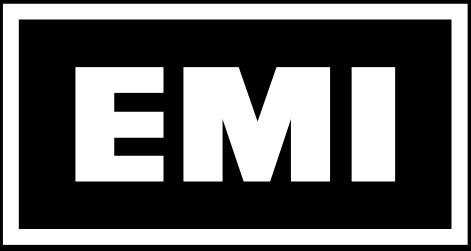Home » Blog » Water Solutions » Everything You Need to Know About Choosing the Best Water Purifier for Home: A Comprehensive Buyer’s Guide
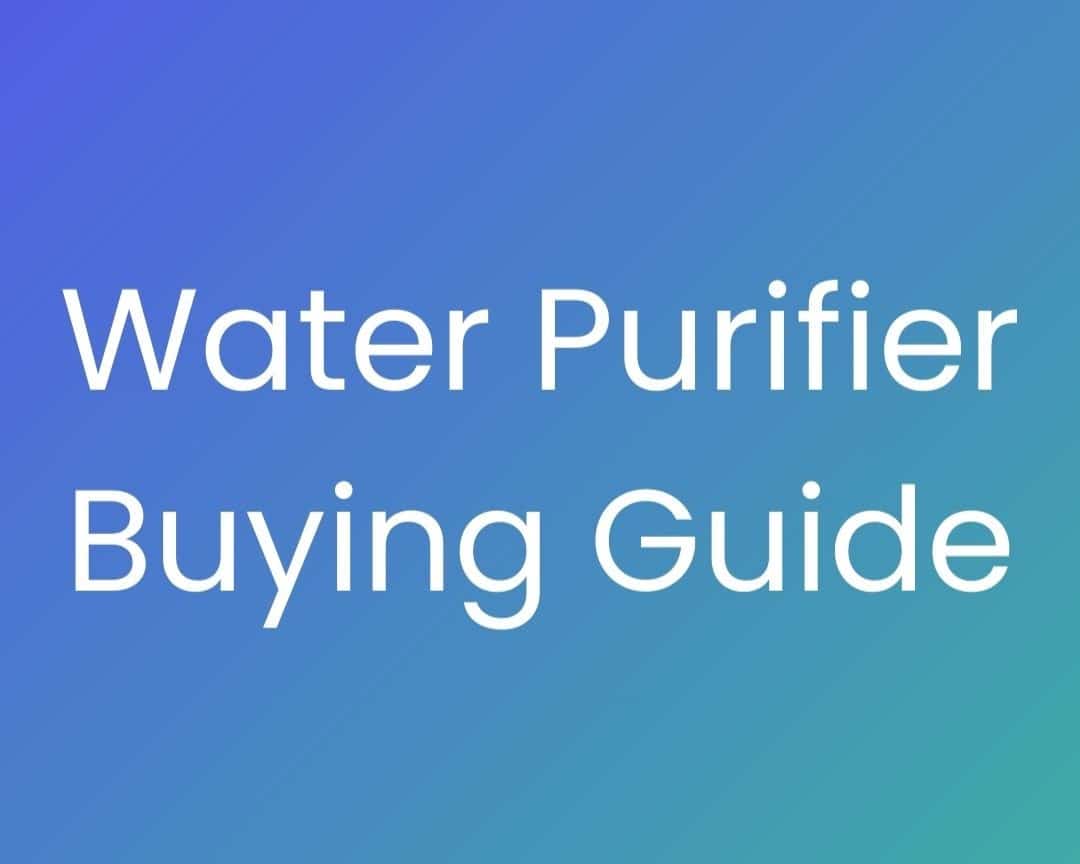
Starting a journey towards a healthier lifestyle begins with something as simple as drinking pure water. However, the term “purification” can be confusing for many.
To understand it better, let’s first figure out why the water we get from different sources isn’t always pure and what “pure water” really means. Take, for example, the “Battery Water” used for home or office inverters; it has very few impurities and minerals, but it’s not suitable for drinking.
So, let’s dive into the details of water purification and filtration systems, exploring what’s best for our health and overall well-being.
1. Types of Water Sources
Let’s begin by exploring the various sources from which we obtain water for our daily consumption.
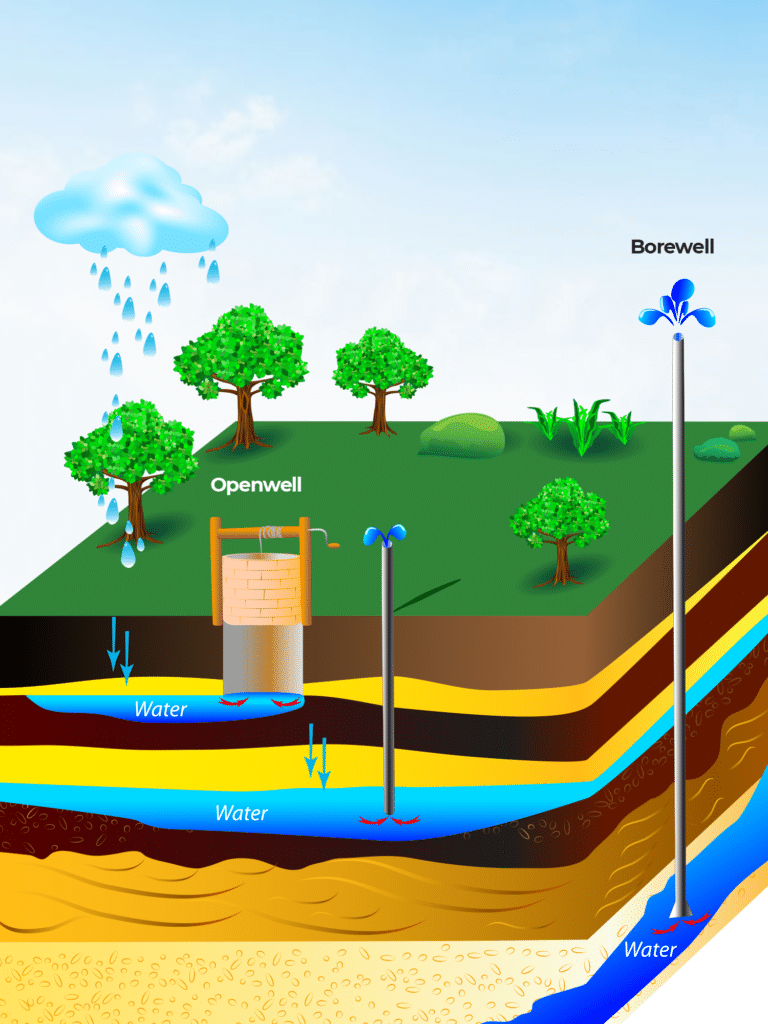
1.1. Openwell
An open well is a type of groundwater extraction structure that taps into unconfined aquifers. It consists of a vertical hole with a larger diameter, typically ranging from 2 to 10 meters, which is dug or sunk into the rock or soil mass.
Openwell water is commonly accessed in rural and suburban areas, serving as a relatively simple and accessible water supply. However, due to its proximity to the surface, openwell water is more susceptible to contamination from surface runoff, pollutants, and other environmental factors.
1.2. Borewell
A borewell is a groundwater extraction structure that taps into fractured aquifers in confined or semi-confined conditions. It is a narrow hole, typically ranging from 4.5 inches to 12 inches in diameter, drilled into the ground to access groundwater for drinking or other purposes based on its quality.
Water hardness in most borewell water is a natural occurrence resulting from the weathering of limestone, sedimentary rock, and calcium-bearing minerals. Additionally, hardness may locally manifest in borewell water due to the discharge of chemicals and mining industry effluents, or the excessive application of lime in agricultural areas.
1.3. Municipal/Corporation/Tap Water
In India, reservoirs are created by constructing dams across rivers. A dam, acting as a physical barrier, holds back water, and this water is subsequently treated before being distributed to homes and businesses through an intricate network of water tanks and underground pipes.
Public water systems typically employ a sequence of water treatment processes, including coagulation, flocculation, sedimentation, filtration, and disinfection.
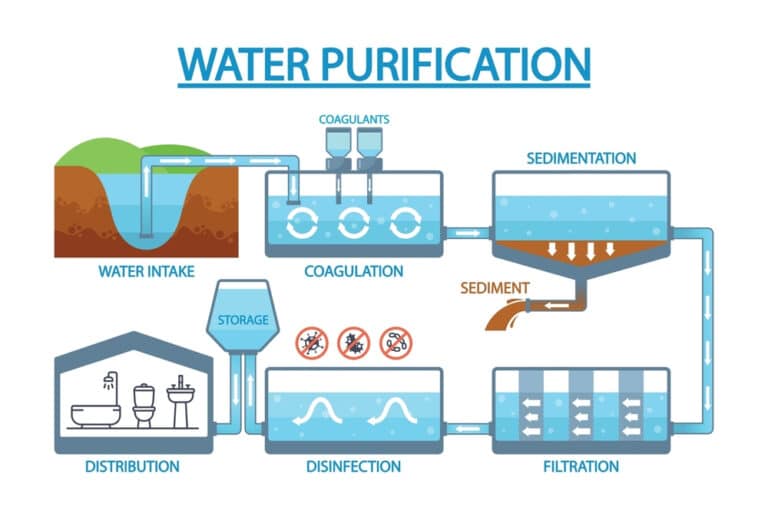
The collection of river flow and rainwater in reservoirs contributes to a relatively low Total Dissolved Solids (TDS), a term that will be explained in more detail shortly. The presence of added chlorine in municipal water, used to eliminate microorganisms such as viruses and bacteria, may be unpleasant for many during consumption.
But in water-scarce cities like Dubai, seawater, which is the primary source and highly saline, undergoes treatment using advanced Reverse Osmosis (RO) systems before being distributed to communities as tap water.
2. Understanding Drinking Water Contaminants: Categories and Examples
The United States Environmental Protection Agency (EPA) defines water contaminants as any substances present in water other than water molecules themselves. Drinking water is expected to contain small amounts of certain contaminants. While some may pose harm at specific levels, others are relatively harmless. Broadly categorized, drinking water contaminants fall into several groups:
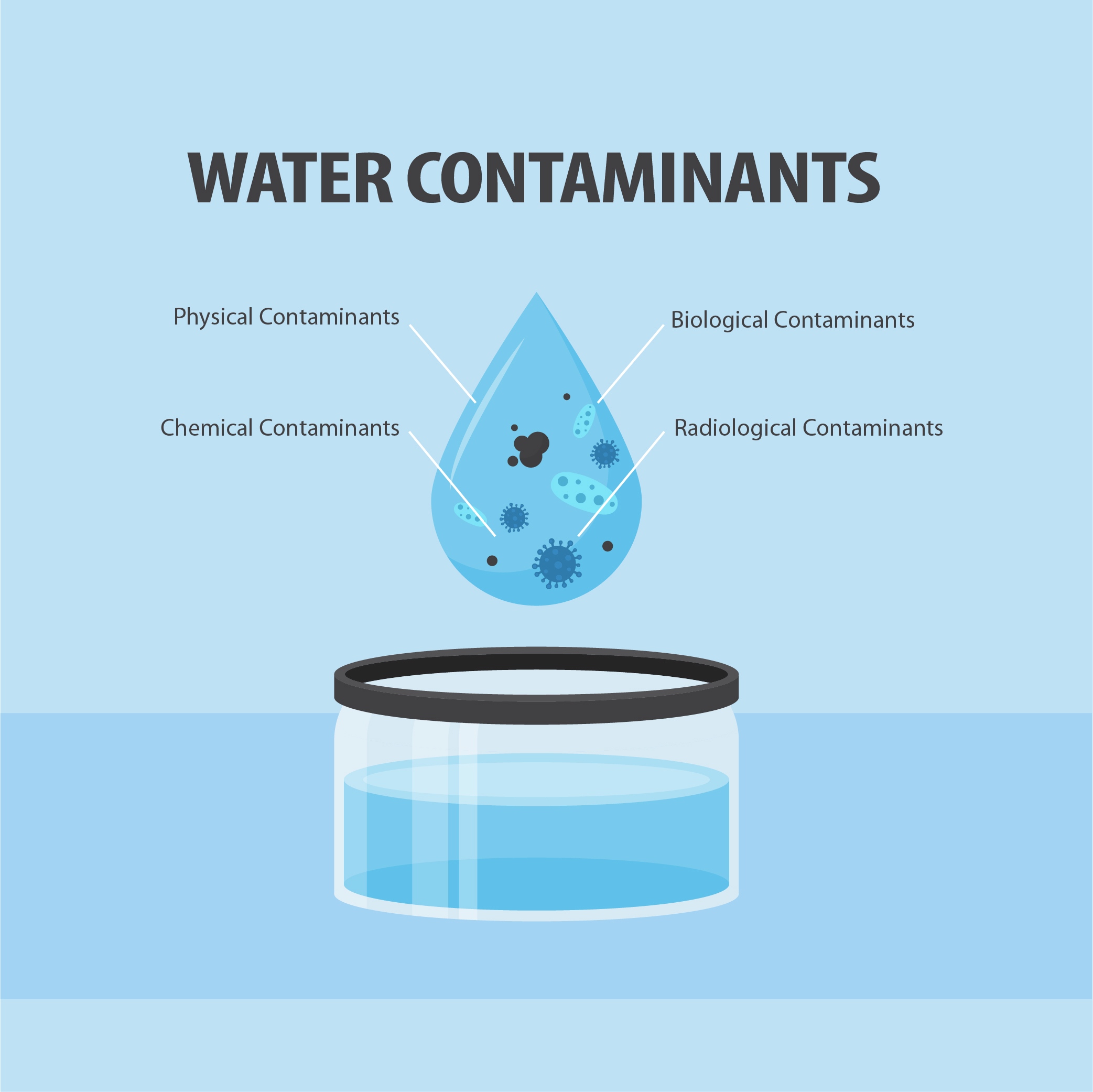
2.1. Physical Contaminants
Substances impacting the appearance or texture of water, such as sediment, organic material, or dirt. Often caused by natural processes or soil erosion, these contaminants, while generally not harmful in small amounts, can diminish water quality and clarity.
2.2. Chemical Contaminants
Elements or compounds, whether natural or man-made, including nitrogen, bleach, pesticides, metals, or drugs. These contaminants may originate from runoff, industrial waste, agricultural activities, or household products.
2.3. Biological Contaminants
Organisms residing in water, such as bacteria, viruses, protozoa, or parasites, also known as microbes or microbiological contaminants. These contaminants can stem from sources like human or animal feces, sewage, or wildlife.
2.4. Radiological Contaminants
Unstable atoms emitting ionizing radiation, like caesium, plutonium, or uranium, commonly referred to as radioactive contaminants. These can arise from both natural sources such as rocks or minerals, and man-made sources including nuclear power plants, medical waste, or weapons.
Understanding these categories is crucial for assessing and managing water quality to ensure safe consumption.
3. Navigating Total Dissolved Solids (TDS): Guidelines and Recommendations
Total dissolved solids (TDS) is a measure of the dissolved combined content of all inorganic and organic substances present in the water. Common inorganic salts within water include cations such as calcium, magnesium, potassium, and sodium, as well as anions like carbonates, nitrates, bicarbonates, chlorides, fluorides, and sulfates.
TDS is typically measured in parts per million (ppm) or milligrams per litre (mg/L), with these units being equivalent. TDS in water can be measured using a TDS meter or a conductivity meter. These devices provide a numerical value that represents the total dissolved solids present in the water
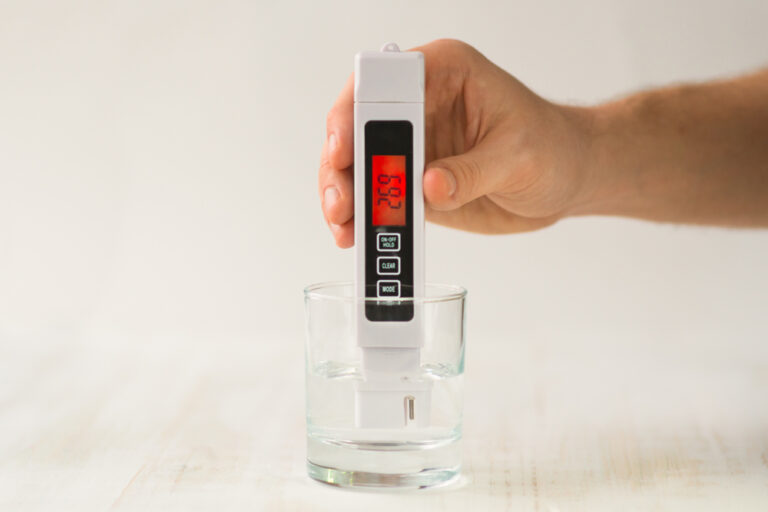
What is the permissible limit of Total Dissolved Solids (TDS) in drinking water?
The permissible limit for Total Dissolved Solids (TDS) in drinking water lacks a universally agreed-upon standard. According to the World Health Organization (WHO), outlined in their “Guidelines for drinking-water quality: Fourth edition incorporating the first and second addenda“, “Reliable data on possible health effects associated with the ingestion of TDS in drinking-water are not available, and no health-based guideline value is proposed. However, the presence of high levels of TDS in drinking water may be objectionable to consumers”.
However, WHO emphasizes that, “The palatability of water with a total dissolved solids (TDS) level of less than about 600 mg/l is generally considered to be good; drinking-water becomes significantly and increasingly unpalatable at TDS levels greater than about 1000 mg/l.” The Central Pollution Control Board of the Government of India also advocates for this specification. Standard limits for each parameter in water are also listed.
The United States Environmental Protection Agency (EPA) recommends maintaining Total Dissolved Solids (TDS) in drinking water below 500 mg/L, as per their non-enforceable guidelines, referred to as the Secondary Standard. As per the Bureau of Indian Standards (BIS) Drinking Water Specification (IS:10500-2012), the acceptable limit for TDS in drinking water is a maximum of 500 mg/L.
The various standards and recommendations mentioned above may potentially confuse consumers regarding the ideal TDS level. However, in general practice, the recommended TDS level for drinking water should fall within the range of 40 to 150 mg/L. Levels beyond this range may be unpleasant for consumers.
What are the major factors to consider before drinking water?
Based on the insights discussed above, there are three main factors to ensure the compliance of our drinking water.
- Drinking water shall be free from Total Suspended Solids (TSS) such as sediment, silt, sand, plankton, and algae.
- The Total Dissolved Solids (TDS) of drinking water should be within the range of 40 – 150 mg/L.
- Drinking water should be completely free from live microbiological contaminants such as bacteria and viruses.
Bear in mind that, for the majority of cases in selecting a drinking water purifier in both rural and urban areas, checking the TDS level is generally sufficient. However, in some instances where industrial, agricultural, or mining pollution prevails, a detailed water test may be necessary.
With these considerations in mind, let’s delve into the section discussing various types of water purifiers.
4. Types of Water Purifiers
Let’s delve into a comprehensive discussion about the various types of water purifiers, each uniquely designed to cater to distinct filtration needs. Understanding these different systems will empower you to make an informed decision for your specific water purification requirements.
4.1. Gravity Water Purifier
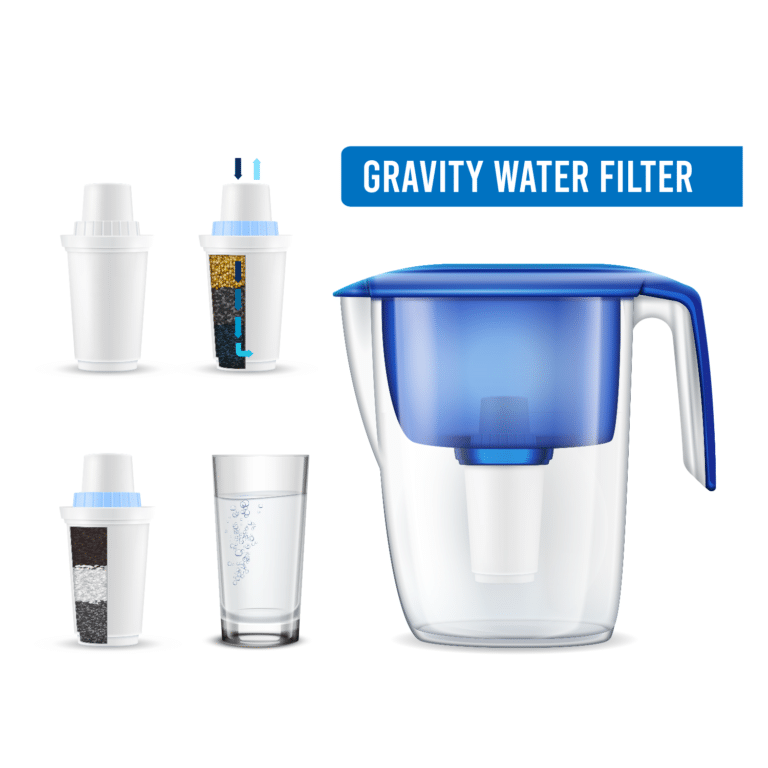
A gravity water purifier is a type of water filtration system that operates without electricity, relying on the force of gravity to move water through a series of filters. Typically designed for countertop or tabletop use, this system utilizes multiple filtration stages, often including activated carbon and ceramic filters, to remove contaminants from the water.
4.1.1. Pros
- No Electricity Needed: Gravity water purifiers operate without electricity, making them suitable for areas with unreliable power sources.
- Portability: They are often compact and portable, making them convenient for outdoor activities, camping, or emergency situations.
- Cost-Effective: Gravity purifiers are generally more affordable than advanced electric purifiers, making them accessible to a wider range of users.
4.1.2. Cons
- Limited Filtration Capacity: The filter cartridge has a finite life and requires frequent replacement.
- No Reduction of TDS: It does not remove heavy metals, other chemical contaminants, or lower the Total Dissolved Solids (TDS) in water.
- Ineffectiveness Against Microbiological Contaminants: The purifier is not able to eliminate microbiological contaminants such as bacteria and viruses from water.
4.1.3. Where to Use
A gravity water purifier is suitable primarily for removing sediments and mitigating the effects of chlorine from treated municipal tap water, up to a certain level. The system incorporates small sediment filters and activated carbon filters to address these specific issues.
However, it’s important to note that while the purifier enhances the water’s clarity and taste, it may not eliminate microbiological contaminants entirely. Therefore, for drinking purposes, it is advisable to further boil the water to ensure the removal of microbiological contaminants.
4.2. UV+UF Water Purifier
A UV+UF water purifier is a type of water purification system that combines two distinct technologies: Ultraviolet (UV) and Ultrafiltration (UF).
- UV Technology: UV technology involves the use of ultraviolet light to disinfect water by inactivating or destroying harmful microorganisms like bacteria, viruses, and parasites. The UV rays penetrate the microorganisms’ cell walls, disrupting their DNA and rendering them incapable of reproduction. This water is protected from all the harmful effects of microbiological contaminants.
- UF Technology: Ultrafiltration is a physical filtration process that uses a semipermeable membrane to remove suspended particles and larger microorganisms. The membrane has fine pores that allow water molecules to pass through while blocking particles above a certain size.
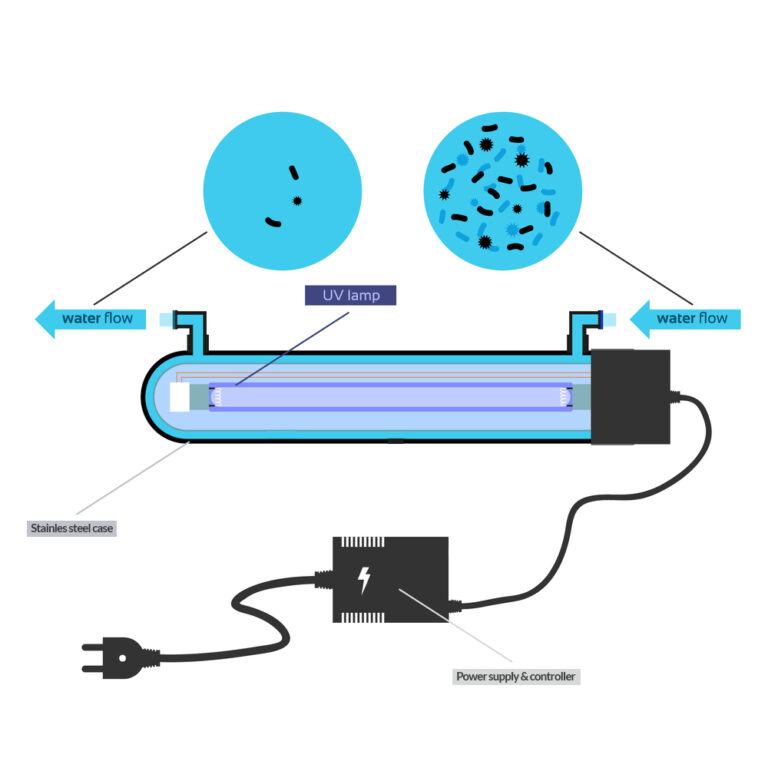
As UV and UF water purifiers are inherently equipped with pre-sediment filters and activated carbon filter cartridges, they effectively eliminate the odor and taste of chlorine and other organic components. This enhancement results in improved overall taste and odor of the water.
4.2.1. Pros
- Comprehensive Purification: The combination of UV and UF technologies provides comprehensive purification, addressing both biological contaminants and larger particles.
- Maintenance: UV+UF purifiers often have relatively low maintenance requirements, with periodic checking of the UV lamp and replacement of the UF membrane when needed.
4.2.2. Cons
- Doesn’t Remove Hardness or Lower TDS: The purifier does not eliminate hardness from water nor reduce the Total Dissolved Solids (TDS) content. It is only effective for water with Total Dissolved Solids (TDS) levels below 150 mg/L.
4.2.3. Where to Use
The UV+UF water purifier is an ideal choice for treating low TDS groundwater and municipal tap water. It effectively removes larger particles and microorganic contaminants. It also eliminates the unpleasant odor and taste of chlorine in the water, when equipped with activated carbon cartridges. It’s worth to note that, since the UV+UF purifier does not reduce the TDS level of water, it maintains essential minerals in low TDS water.
4.3. Reverse Osmosis (RO) Water Purifier
In the domain of residential drinking water purification, Reverse Osmosis (RO) technology stands out as the epitome of advanced filtration. It is globally recognized and widely adopted for its efficacy in purifying drinking water. Residential reverse osmosis systems employ a five-stage treatment process to significantly reduce levels of virtually all types of contaminants.
4.3.1. How does RO Work for Drinking Water Purification?
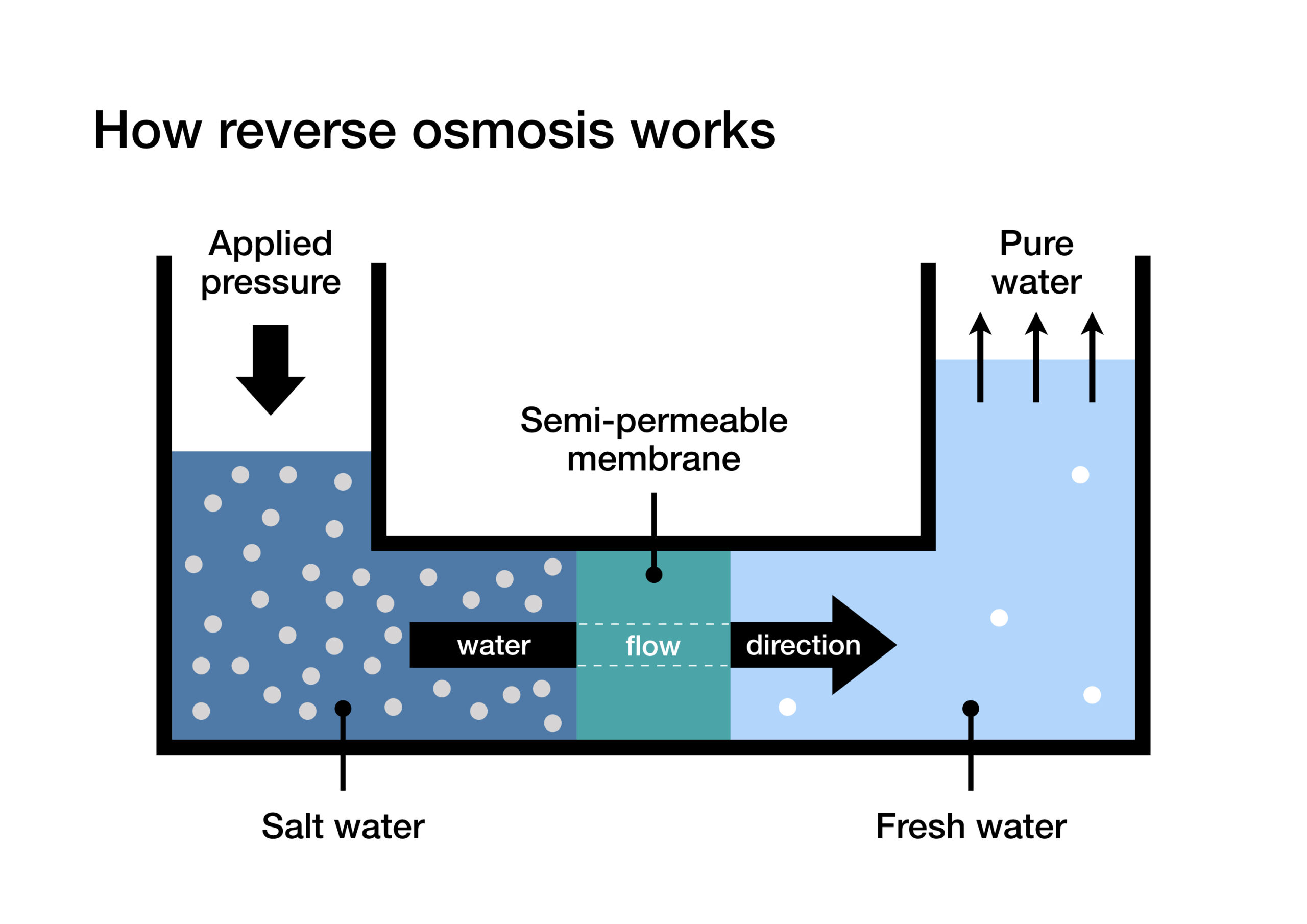
Reverse osmosis (RO) is an advanced water purification process that utilizes a semi-permeable membrane (with smaller pore size than that of UF membranes) to separate water molecules from other substances. In the natural process of osmosis, water molecules move from an area of low solute concentration to an area of high solute concentration through a semi-permeable membrane.
Conversely, in reverse osmosis, the opposite occurs. Water molecules are pressured through a semi-permeable membrane from an area of high solute concentration to an area of low solute concentration. This external pressure ensures that water molecules pass through, while substances such as salt, bacteria, and impurities are effectively blocked. The resulting purified water is termed permeate, while the concentrated leftover water is known as reject water or saline water.
4.3.2. What are the multiple stages of water purification utilized in residential RO drinking water purifiers?
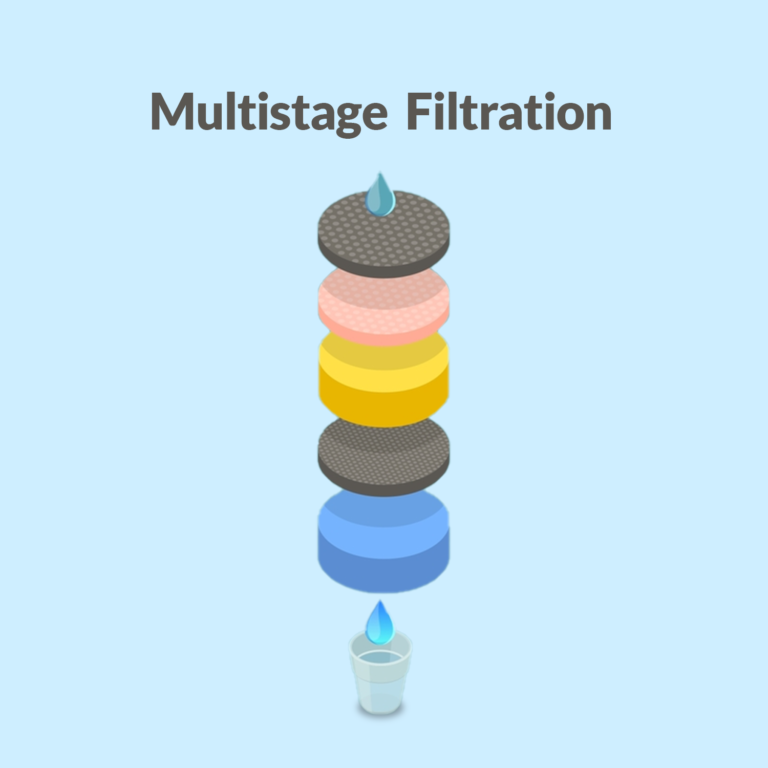
Residential RO water purifiers employ multistage purification to deliver high-quality, pure water for human consumption and to reduce the workload on the RO membrane, thereby extending its service life. In this multistage filtration, water flows from one stage to another, progressively filtered as per the sequence outlined below.
Pre-Filter is designed to trap larger particles like sediment, sand, and debris using a 5-micron spun filter. By eliminating these impurities, it ensures that the water is free from visible contaminants, establishing a foundation for further purification. Typically located outside the water purifier assembly.
The Sediment Filter takes an additional step by capturing even finer particles that might have bypassed the Pre-Filter. It proves effective against tiny sediments, rust, and other small impurities, playing a crucial role in protecting the RO membrane.
The Pre-Carbon Filter is dedicated to removing organic matter and chlorine from drinking water. It plays a vital role in safeguarding the delicate RO membrane from potential damage caused by chlorine.
The RO membrane efficiently separates dissolved salts, heavy metals, and microbial contaminants from water, leading to a reduction in water hardness and Total Dissolved Solids (TDS).
The Post-Carbon Filter enhances the taste and quality of water by eliminating any residual odors and tastes.
4.3.3. Pros
- Most Effective Filtration: RO stands as the most effective and advanced solution for purifying water for human consumption.
- TDS Removal: RO technology is the sole solution for reducing water Total Dissolved Solids (TDS). Modern RO membranes for residential purifiers can handle TDS levels of 2000 mg/L and even higher.
4.3.4. Cons
- Reject Water Generation: The RO system produces highly concentrated saline water as a byproduct, commonly known as reject water, which may not be suitable for other domestic purposes.
- Remineralization Cartridge Requirement: In some cases, the usage of a remineralization cartridge may be necessary, as RO filtration has the potential to strip essential minerals from the filtered water.
- Initial Cost: The upfront cost of purchasing and installing RO systems can be relatively high compared to other water purification methods.
4.3.5. Where to Use
As discussed above, RO water purifiers are suitable and often the only viable solution for filtering water from groundwater sources, such as open wells and bore/tube wells, which may have a Total Dissolved Solids (TDS) level above 150 mg/L. Therefore, they prove to be the best solution for homes and residential apartments in rural and semi-urban areas where there is no supply of municipal tap water.
5. How to Choose the Best Water Purifier for Your Home
Here are key factors to consider when making this important decision:
5.1. Water Quality Assessment
Initiate the water purifier selection process by evaluating the type and quality of the water accessible to your home. Identify the water source, whether it be tap water, well water, or from alternative sources. Measure the Total Dissolved Solids (TDS) in the available water. As mentioned earlier, in cases where industrial, agricultural, or mining pollution is prevalent, a comprehensive water test may be required.
5.2. Desired Quality of Water for Consumption
As discussed in detail, water intended for consumption should ideally possess a desirable TDS level for the consumer. The recommended range for TDS levels is 40 to 150 mg/L. Additionally, it should be free from living microbiological contaminants that have the potential to grow and reproduce in the human body. Choose a water purifier type that aligns with these criteria.
5.3. Filtration Capacity
When selecting a water purifier, take into account the household’s usage patterns. Ensure that your chosen water purifier model has a suitable filtration rate and maximum duty cycle per day to meet the daily requirements of the household.
5.4. Storage Tank Capacity
Evaluate household usage patterns and choose a water purifier model with a suitable storage tank capacity.
5.4. Maintenance
Ensure prompt after-sale service from the vendor. Check factors such as the lifespan of the filters inside the water purifier, the cost of filter replacements, the availability of an Annual Maintenance Contract (AMC). Select a suitable maintenance plan to meet your needs.
In conclusion, selecting the right water purifier for your home is a decision that significantly influences the health and well-being of your household. By carefully considering the factors discussed in detail in this article, you can make an informed decision that aligns with your specific needs. It’s crucial to prioritize the effective removal of contaminants, adhere to recommended TDS levels, and ensure the reliability of after-sale services.
If you have any unanswered questions or need further clarification, feel free to ask in the comment section.

